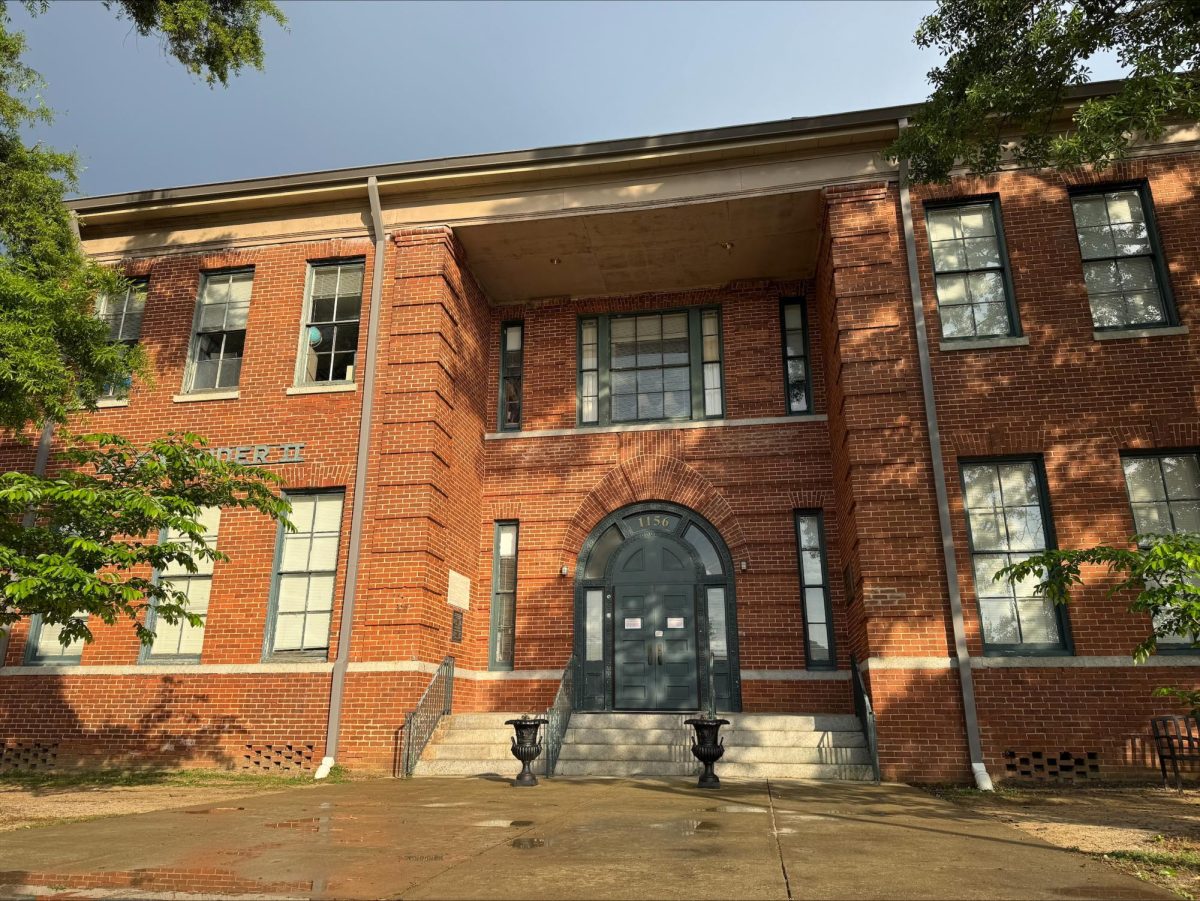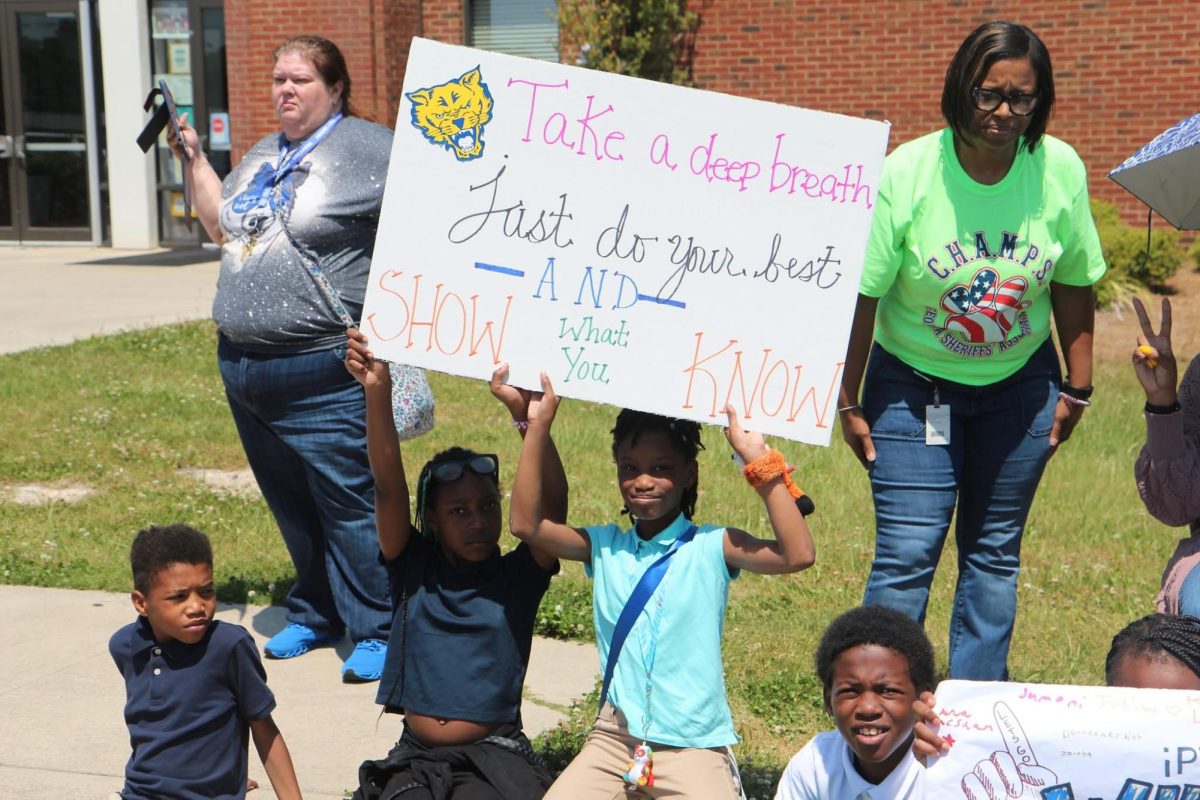Bibb County public schools are exploring ways to address one of the greatest barriers they face when it comes to improving academic performance: getting students to go to school.
Chronic absenteeism has been a long-standing challenge for the district that has only been compounded by the pandemic. At a meeting in August, the school board was presented with data illustrating a correlation between attendance and academic performance.
The more days Bibb Schools students were present, the better they performed on tests. The more days students missed, the less likely they were to perform well.
About 27% of the district’s 21,300 students were chronically absent during the 2022-23 school year. That’s an 71% increase compared to 2017-18. Chronically absent is defined as missing 10% or more of the school year, which amounted to 17 days for 2022-23.
The problem is particularly acute at seven schools where 50% or more of the student population was chronically absent during the 2022-23 school year, according to The Macon Newsroom’s analysis of district data. Four of the seven are elementary schools.
- Southwest High School reported 67% of its 731 students were chronically absent.
- Ballard-Hudson Middle School reported 66% of its 712 students were chronically absent.
- L.H. Williams Elementary School reported 61% of its students were chronically absent.
- Bruce Elementary reported 55% of its 439 students were chronically absent.
- Union Elementary reported 53% of its 480 students were chronically absent.
- Southfield Elementary reported 52% of its 722 students were chronically absent.
- Ingram-Pye Elementary reported 50% of its 487 students were chronically absent.
Principals, counselors and social workers for the district’s elementary schools met one recent morning for a sort of round table workshop to discuss the root causes of truancy and exchange best practices.
“It pains me to look at some of our chronic attendance data,” Superintendent Dan Sims said at the meeting. “When folks look at our attendance data, I want them to know our efforts are solid.”
The district is also using “breakthrough teams,” pairing chronically absent students with an adult in the building. Each school day, regardless of whether the student is present or absent, the adult “is touching base with that individual or that individual’s parent,” assistant superintendent of student affairs Jamie Cassady said.
Sims said he was “actually glad” to see a couple of news reporters present because, “this is not our issue, but yet it is. It’s a shared issue and I think it’s important for us to be bold enough to communicate it as a shared issue. Like, you can’t count on schools alone, or a district alone, to make sure students come to school every day.”
Sims asked attendees to raise their hands if they were already observing attendance issues in the 2023-24 school year. Many raised a hand.
“You would think in the month of August, kicking off the school year, that’s the last problem we would have. So, we’re dealing with some unique things,” Sims said. “Who remembers a time when we did not have attendance issues like this? Who remembers it? Anybody?”
Not a single person raised their hand.
Bibb Schools has grappled with the problem of chronically absent students since before the turn of the century, according to Telegraph archives. Different approaches to address the issue have been attempted over the years.
In 2011, the district sent Macon police to the homes of 49 students and offered parents the opportunity to either take their children to school or have officers take them, according to Telegraph archives. Visits to the students’ homes revealed circumstances such as illness and economic situations were the underlying root causes for absenteeism.
In 2014, about 14% of the district’s 26,552 students were absent 15 or more days, according to Georgia Department of Education data. That autumn, the district launched a new truancy program that was a collaborative effort between the district’s campus police, the sheriff’s office, the Georgia Department of Juvenile Justice and the Division of Family and Children Services. Students who missed six or more days were picked up at home by the district’s truancy officer and transported to a central location where their individual needs were evaluated, according to a November 2014 Telegraph article.
The district’s enrollment has declined by nearly 5,000 students since then. Chronic absenteeism remains a critical challenge.
Sims said he hoped the recent meeting influenced people “so we can get a little bit more pressure on parents, students and caregivers, etcetera, to do their part. And if there’s a barrier, we would love to know about it.”
Truancy Task Force
Georgia’s compulsory attendance law requires that children 15 years old or younger attend 180 days of school unless there’s a valid reason to miss. A parent convicted of violating the state’s compulsory attendance law may face a fine, community service or even jail time.
The district’s attendance policy, based on Georgia law, says parents or guardians are notified upon a student’s fifth unexcused absence. The penalty and consequences of such absences are outlined in the notification which states any additional absences will constitute separate offenses.
Parents receive robocalls from the district when their children miss a day in elementary school or a class period in middle and high school.
Teachers contact parents after two or three consecutive absences, Cassady said. If students miss more days, they are referred to the school counselor, then to one of the district’s nine social workers. Once a student misses 10 days, they are referred to the truancy task force.
“When elementary school kids don’t come, it’s typically not their fault,” Cassady said. “It is typically an adult that’s in the house.”
The truancy task force aims to identify any barriers that may exist for a family and also “to see if a law has been broken,” Cassady said. The task force has helped pay electric bills and found families treatment for mental illnesses.
The district sends parents and guardians a certified letter by mail before judicial involvement, which occurs if meetings with the task force do not result in improved attendance.
Cassady said about 35-40 parents end up in court each year for violating the state’s law requiring mandatory education for children between ages 6 and 16.
About half of those cases referred to state court end up on the docket and most are dismissed or not prosecuted by the solicitor general, according to state court records obtained by The Macon Newsroom.
Solicitor General Rebecca Grist said her office “works hard to avoid formal prosecution” and most cases are resolved before trial.
“If the problem can be resolved absent formal prosecution, that is the goal,” Grist said. “Only after the Truancy Task Force has been unsuccessful in resolving the issue is the case referred for prosecution. … A successful prosecution requires many factors to be present and enforceable to prove a case beyond a reasonable doubt. If we cannot prove a case beyond a reasonable doubt, we do not accuse it.”
When it comes to getting absent high school students back in school, the district’s judicial recourse is limited to parents of students who are 16 or younger.
Social workers still knock on doors to find students and make home visits, but Cassady said, “it’s a matter of really, really building relationships with those kids, creating experiences with those individuals to getting them to come to school.”
The district also uses “breakthrough teams,” pairing chronically absent students with an adult in the building. Each school day, regardless of whether the student is present or absent, the adult “is touching base with that individual or that individual’s parent,” Cassady said.
Root Causes
Counselors, principals and social workers shared some of the root causes of students missing school at a recent district-wide meeting for elementary grades. One theme was parents who do not value or understand the educational foundation a student develops in pre-kindergarten, kindergarten and elementary grades. Other reasons mentioned included transportation issues, problems at home and illness.

“We never want to assume that truancy is something intentional,” Takeysha Lewis, district attendance and transfer coordinator, said. “For some, it may be but for some it is not always the case. And we want to make sure that we are standing ready to try and explore what those root causes are.”
Some academics, activists and those charged with enforcing attendance laws make a distinction between “truancy,” an intentional act, and chronic absenteeism, a circumstance.
Sharnell Harris, school counselor at Bruce Elementary School, shared a success story involving a computer lab teacher who developed a rapport with a chronically absent student.
The student “told her some stuff that was going on at home that I needed to know but she wasn’t comfortable talking about,” Harris said. “They needed some stuff at home. I was able to give it to them, but you can’t get it if I don’t know you need it. So, relationships were built even with just checking in for five minutes in the morning.”
After the meeting, Bruce Elementary Principal Kizzie Lott said the biggest challenge to addressing absent students is “being able to connect with the parents and get them to understand the importance of coming to school.”
School board president Juawn Jackson said in a recent interview that the district is “trying to be very creative in how we get parents and get students to the table and get them to be partners to our effort.”
Jackson said the district is planning “student success expos” in each school zone at which students, teachers, parents and staff can get abreast of where the student stands academically and connect with resources they may need. The event also will feature food, games and family fun, Jackson said.
The first expo for the Central High School district is set for Sept. 26 at Tattnall Square Park, Jackson said.
“This is a opportunity for us to help students help their parents or guardians to be a part of the ownership of their individual data, to help us get to where we need to be, as far as decreasing our truancy, and making sure that our students … (are) on the academic track towards success,” Jackson said.
To contact Civic Journalism Fellow Laura Corley, call 478-301-5777 or email Corley_le@mercer.edu.









